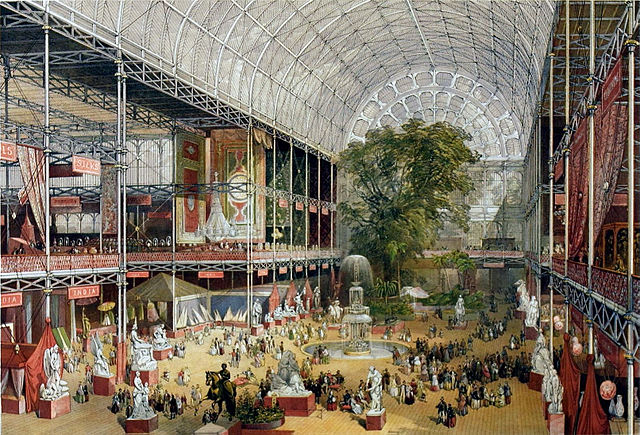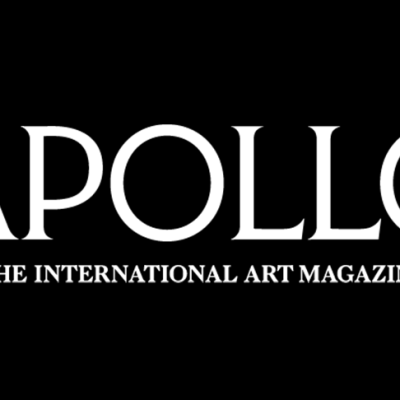The announcement earlier in the summer by the Department for Culture, Media and Sport that it is to sponsor to the tune of £5 million a ‘Great Exhibition’ to be organised by a northern city in 2018 has moved on to its next stage: the release of a shortlist of four cities and towns: Blackpool, Bradford, Newcastle-Gateshead and Sheffield. The winner will be revealed in the autumn. The prize will, it is hoped, proclaim artistic excellence in the visual arts including design, and contribute to the economic regeneration of the ‘Northern Powerhouse’ that the current administration has inherited from the last one. The contenders have been given an open brief to devise their own ideas.
The Crystal Palace in Hyde Park for the Great Exhibition, 1951. Photo: Saotome kenji/Wikimedia Commons (used under public domain licence)

Let’s hope that this event will emulate the Great Exhibition of 1851. That was the first of the universal exhibitions that played an enormous part in the cultural and economic life of Europe and the United States in the second half of the 19th century and well into the 20th, becoming an international phenomenon. The 1851 event attracted over six million visitors from all over Britain and made a huge profit (over £186,000 to be multiplied at least 150 times to reach a comparable figure today). The Royal Commissioners for the Great Exhibition still distribute funds today and inspired the great museum quarter in South Kensington.
Interior of the Crystal Palace, Great Exhibition, 1851. Image: J. McNeven/Wikimedia Commons (used under public domain licence)

But it was not only London that benefitted. Soon cities all over Britain were following this example, organising in purpose-built structures and in borrowed spaces exhibitions dedicated to the fine arts, to the decorative arts and design, to commercial products of all sorts, with moral instruction alluringly mixed with popular entertainment, demonstrations of technological advances and historical displays. Following Manchester’s Art Treasures of England show in 1857, such cities as Leeds, Bradford, Sheffield and Newcastle all embarked on ambitious ventures that were often closely associated with the foundation of new publicly funded museums and art galleries. Glasgow in particular was notable for its hugely ambitious exhibitions in Kelvingrove Park, which ran for months and attracted even more visitors than the Great Exhibition.
These exhibitions constituted one of the most effective communication systems of Victorian Britain. They stimulated huge curiosity and attracted broad audiences: entrance fees were relatively low, while the rapidly improving railway system allowed easy access from neighbouring towns. Their success was of course assisted by the fact that many of their visitors could not afford foreign travel, that organised sport did not substantially develop until late in the century, or the cinema until the 20th. All those facilities today offer, along with the internet, a powerful and familiar alternative. But there is no reason to suppose that the temporary exhibition has lost its power – the question is whether the four finalists will have the imagination and pizzazz to propose exhibitions that people will really want to see.
Visitors to the Festival of Britain in front of the Dome of Discovery. Photo: Off2riorob/Wikimedia Commons (used under public domain licence)

The Millennium Exhibition offered a dreadful warning of the fate that awaits the uncommitted promoter, the facile crowd-pleaser, the organiser with no real sense of direction. The 1851 Exhibition and the 1951 Festival of Britain were both driven, in their very different ways, by a powerful sense of mission, of a passionate belief in the regenerative effect of international co-operation and of the power of art and design to transform people’s lives. The pusillanimous Millennium low jinks, in contrast, were feebly propelled by the desire to hold an event for its own sake, with the vision of those organising it never extending beyond the desire to attract crowds and headlines.
All the towns competing for this prize have powerful histories and a strong sense of identity. Let’s hope that in striving for this prize they have the fire in their bellies to create a powerful exhibition, both locally and internationally attractive, one that will catch the imagination not only of the North of England but of audiences comparable in size and enthusiasm to the ones who visited the great shows of the 1800s.



